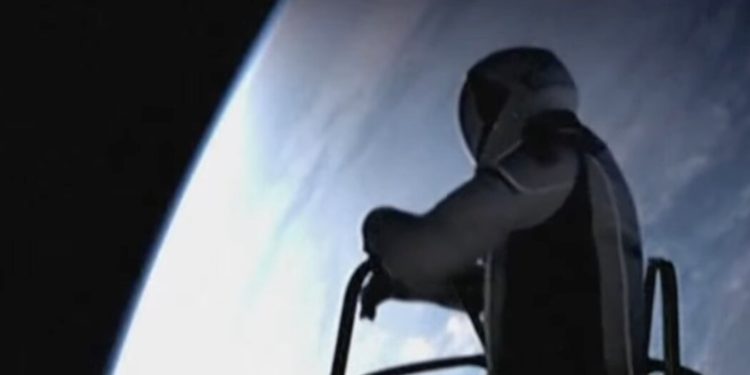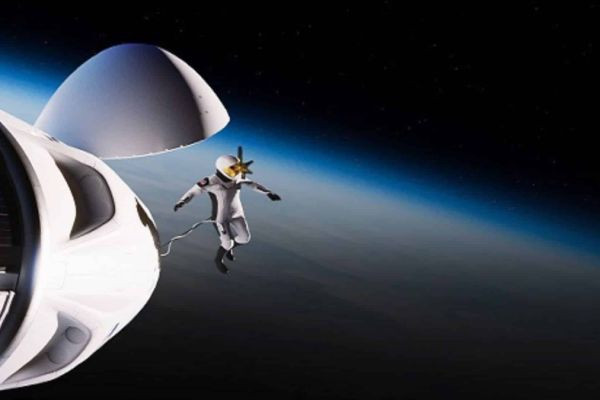The era of space exploration is rapidly shifting from government-led missions to privately-funded endeavors, and SpaceX is once again leading the charge. On the heels of numerous successful rocket launches and pioneering the concept of reusable space technology, SpaceX has achieved yet another monumental milestone—the first-ever private spacewalk conducted from a SpaceX Dragon capsule. This event marks a significant step in the commercialization of space travel, bringing humanity closer to a future where space is not just the domain of astronauts, but of civilians and private companies as well.
A New Age of Space Exploration
The spacewalk, conducted as part of a mission organized by Axiom Space, was a historical first for both SpaceX and private space exploration. It showcased the growing capabilities of private companies in carrying out complex and dangerous tasks that were once reserved for government agencies like NASA and Russia's Roscosmos.
SpaceX’s Dragon capsule, which has already been used in several manned missions to the International Space Station (ISS), was the platform for this groundbreaking event. What makes this spacewalk especially significant is that it involved not only professional astronauts but private individuals, marking a clear transition from government-controlled space missions to private sector-driven space exploration.
The Mission: A Collaboration with Axiom Space
This historic spacewalk was part of a broader mission organized by Axiom Space, a private space exploration company working toward building the first commercial space station. The Axiom Mission 2 (Ax-2), launched by SpaceX, was designed to further develop the concept of private astronaut missions. The crew consisted of both professional astronauts and private individuals, including investors and engineers who financed and supported the mission.
The spacewalk itself involved a series of complex tasks typically conducted by astronauts from government space agencies. It served as an opportunity to test new technology and demonstrate that private missions can carry out these challenging operations safely and efficiently.
During the mission, two crew members exited the Dragon capsule, equipped with advanced suits designed by SpaceX in collaboration with NASA. These suits are lightweight, flexible, and tailored to fit the Dragon capsule's specific requirements, providing a safe environment for spacewalkers while ensuring mobility. For nearly seven hours, the two crew members performed tasks related to the maintenance of the ISS, inspected equipment, and conducted experiments.

The Challenges of Conducting a Spacewalk
Conducting a spacewalk, also known as an Extravehicular Activity (EVA), is one of the most dangerous and technically challenging operations in space. Spacewalks require precise coordination, advanced technology, and an in-depth understanding of the risks involved. The crew must navigate the vacuum of space, manage extreme temperature fluctuations, and ensure that life-support systems are functioning perfectly at all times.
The first private spacewalk presented several unique challenges. The crew had to be trained extensively in spacewalk protocols, safety measures, and how to handle unexpected scenarios. The spacesuits used for the mission were equipped with state-of-the-art life-support systems, communication devices, and cameras to monitor the astronauts’ movements and health conditions.
Moreover, the Dragon capsule had to be outfitted with systems that would support a spacewalk. Airlocks, pressure systems, and docking mechanisms all needed to be tested and adjusted to ensure that the astronauts could safely exit and re-enter the spacecraft.
For SpaceX and Axiom Space, the success of this mission proved that the private sector is capable of executing space missions that involve high-risk activities. This achievement is expected to open new doors for commercial space travel, as more private companies and individuals express interest in space missions.
The Role of SpaceX in the Privatization of Space
SpaceX, founded by entrepreneur Elon Musk, has been at the forefront of the private space race for over a decade. The company has revolutionized space travel by introducing reusable rockets, reducing the cost of launches, and making space more accessible. This latest achievement—the first private spacewalk—further solidifies SpaceX’s role as a leader in the space industry.
Musk’s vision of creating a multi-planetary species hinges on reducing the costs and increasing the frequency of space missions. The Dragon capsule, designed for both cargo and crewed missions, is a cornerstone of this vision. It has already proven its reliability in several high-profile missions, including ferrying astronauts to the ISS and supporting various NASA projects.
The successful private spacewalk not only enhances SpaceX’s credibility but also demonstrates the viability of commercial space missions involving private astronauts. This achievement is likely to spur further investment and interest in space travel, as more companies look to follow in SpaceX’s footsteps.
Impact on the Commercial Space Industry
The significance of this first private spacewalk extends beyond just SpaceX and Axiom Space. It marks a turning point for the entire commercial space industry, signaling that complex space missions can now be carried out by private companies. This opens up a realm of possibilities for future space exploration, including lunar missions, Mars exploration, and even space tourism.
In the coming years, the commercial space sector is expected to grow exponentially. Companies like SpaceX, Blue Origin, and Virgin Galactic are all competing to develop new technologies that will make space travel more accessible and affordable. The success of the private spacewalk sends a clear message that the private sector is ready to take on greater responsibilities in space exploration.
This development also has implications for government space agencies like NASA. As private companies take on more of the responsibilities traditionally handled by national space programs, NASA and other agencies may shift their focus toward more ambitious missions, such as crewed missions to Mars or deep space exploration. By partnering with private companies like SpaceX, NASA can leverage the innovation and agility of the private sector while continuing to pursue its own space exploration goals.
The Future of Private Spacewalks and Space Missions
With the success of this first private spacewalk, the future of private space missions looks promising. Axiom Space plans to build the first commercial space station, which will eventually serve as a hub for private astronauts, researchers, and space tourists. The company has already announced plans for additional private astronaut missions, with spacewalks expected to become a regular part of these missions.
Space tourism is also on the horizon. Companies like SpaceX and Blue Origin are developing spacecraft designed to take private citizens into space. These missions may not only offer a thrilling experience for participants but could also include opportunities for spacewalks, allowing civilians to experience the ultimate adventure.
As technology continues to advance, the cost of space travel is expected to decrease, making it accessible to a wider range of individuals and companies. This could lead to a future where spacewalks and other space activities become commonplace, as private citizens, researchers, and companies venture into space for exploration, research, and even recreation.

The Ethical and Regulatory Implications
While the success of the first private spacewalk is undoubtedly a milestone, it also raises important ethical and regulatory questions. As more private companies and individuals gain access to space, there will be a need for clear regulations and oversight to ensure safety and security. Space is a hazardous environment, and any failure could have catastrophic consequences not only for those involved but also for the broader space ecosystem.
Currently, space missions are governed by international treaties like the Outer Space Treaty, which outlines the peaceful use of space and the responsibilities of nations. However, as private companies take on more significant roles in space exploration, there may be a need to update these regulations to reflect the changing landscape. Questions about liability, the environmental impact of space missions, and the use of space resources will need to be addressed to ensure that space exploration remains safe and sustainable.
Conclusion: A New Frontier in Space Exploration
The first private spacewalk from a SpaceX Dragon capsule represents a major leap forward in the privatization of space exploration. It is a testament to the technological advancements and innovation brought about by companies like SpaceX and Axiom Space, who are pushing the boundaries of what is possible in space travel.
This achievement is likely to have far-reaching implications for the future of space exploration. As private companies continue to develop new technologies and capabilities, space missions will become more frequent, more accessible, and more diverse. The future of space exploration is no longer solely in the hands of government agencies, but is now a shared endeavor between the public and private sectors, paving the way for a new era of discovery and adventure.
The success of this private spacewalk is just the beginning. As we look ahead to lunar bases, Mars colonies, and space tourism, it’s clear that humanity’s journey into the stars is only just beginning.



